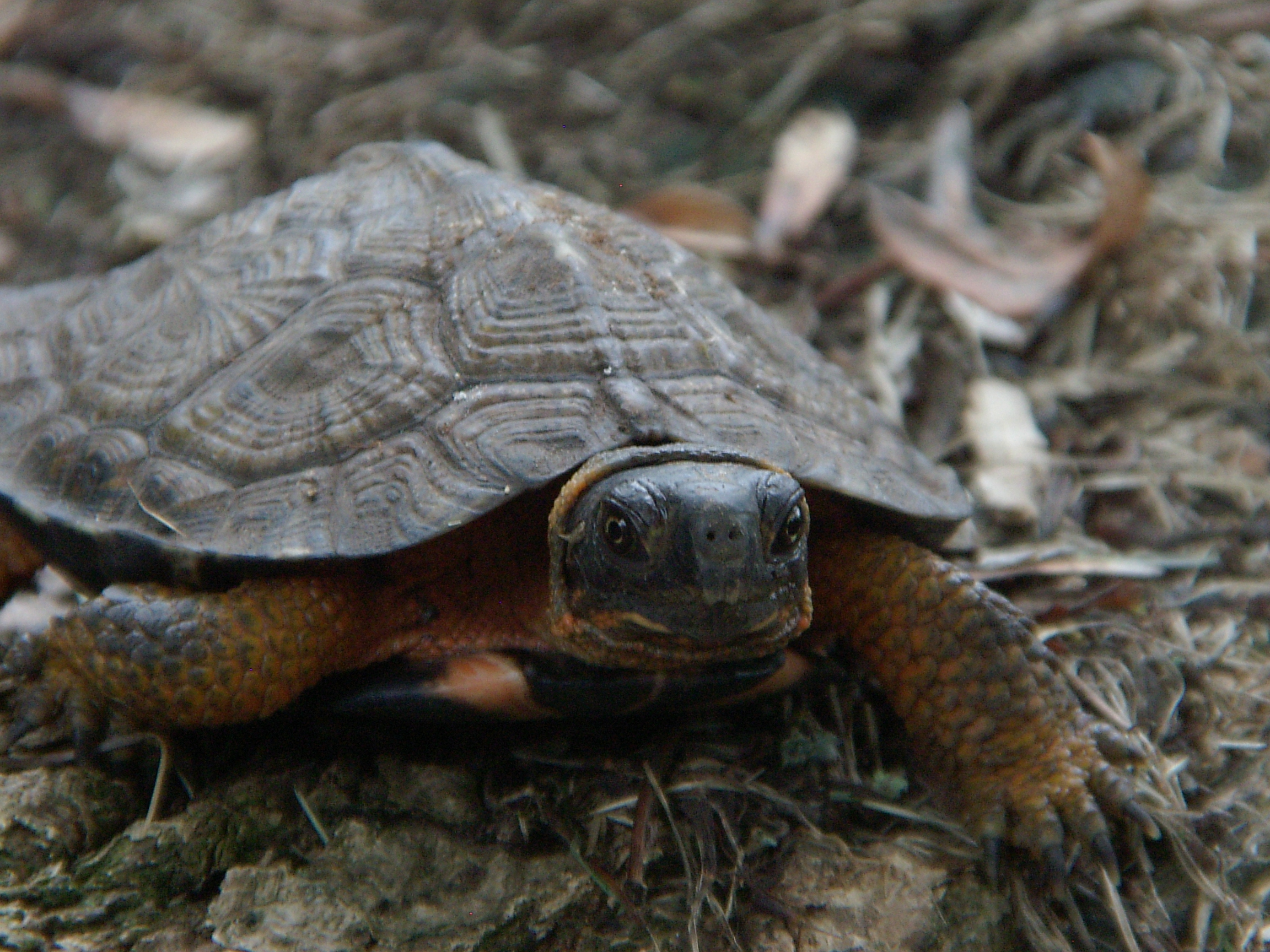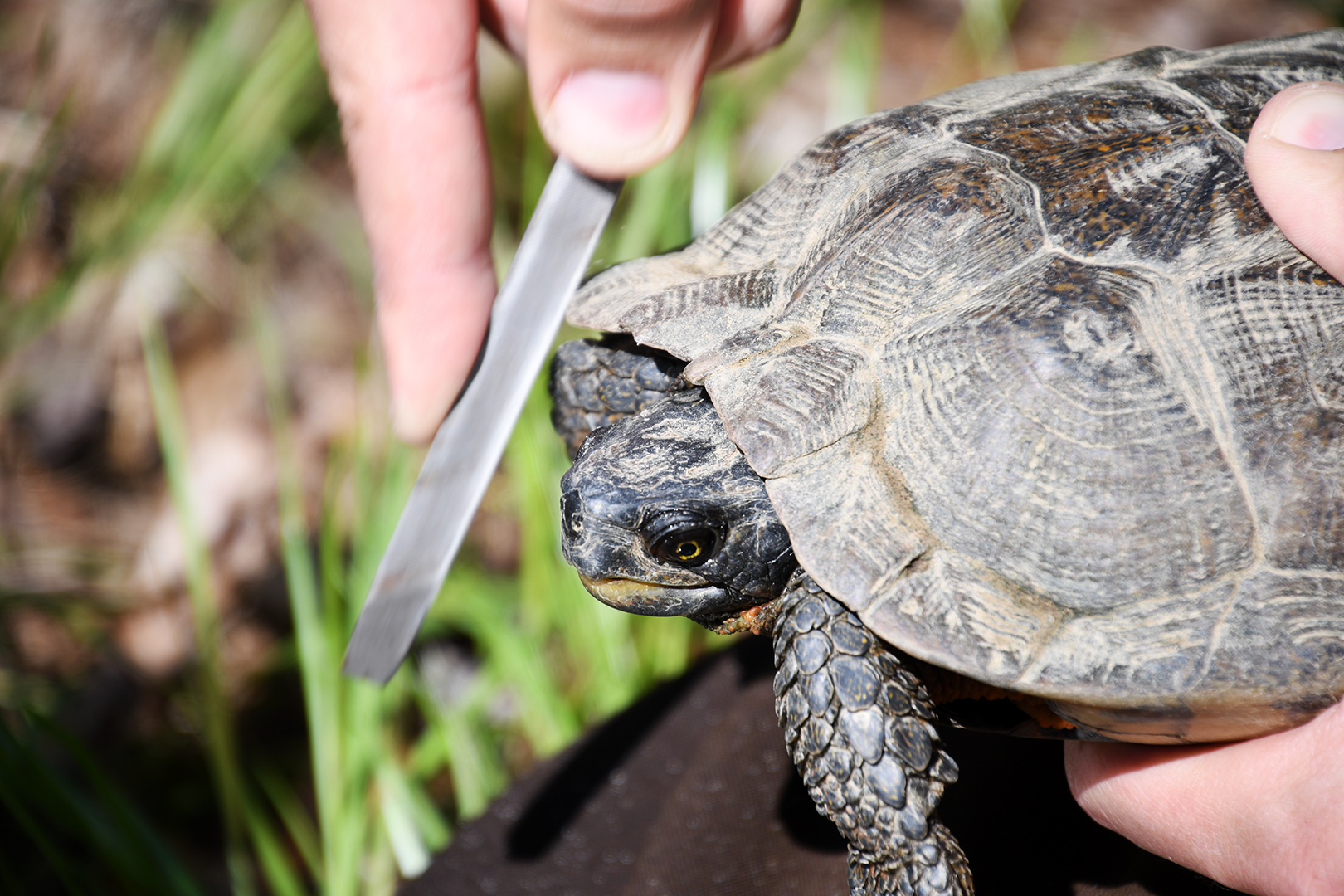Who says wood turtles are slow?
Pennsylvania Fish and Boat Commission (PFBC) biologists might contest any such assertions, especially when they’re trying to catch these animals in streams across Pennsylvania. In the water, wood turtles can quickly swim through channels and dart under cover with surprising adeptness.
“They seem sometimes like a dinosaur with their slow movements. But then when they’re in water, they actually can swim pretty fast,” said Kathy Gipe, a herpetologist with the PFBC. Herpetologists are biologists that study reptiles and amphibians.

Their sculptured shells make them easily identifiable, but there’s still much to learn about the wood turtle, an animal that has inhabited North America for hundreds of thousands of years. Now, the wood turtle is considered a Species of Greatest Conservation Need in Pennsylvania — a designation assigned to vulnerable animals the Commonwealth has a responsibility to protect.
“Wood turtles have been in most of these areas longer than we have,” Gipe said. “There are a lot of gaps in our knowledge and our understanding of the distribution.”
Gipe, her colleagues at the PFBC and partners across the northeastern United States have been working since 2012 or longer to learn more about the wood turtle population from Maine to Virginia. They conduct regular population assessments to gather data and populate a regional database that helps scientists track the trends across the wood turtle’s range. The United States Fish and Wildlife Service (USFWS) also uses the data to consider the wood turtle’s status at the federal level.
Through these efforts and records from citizen scientists through the
Pennsylvania Amphibian and Reptile Survey, a project that encourages the public to share their reptile and amphibian sightings, the PFBC has improved its knowledge and understanding of the wood turtle in Pennsylvania. Some populations are doing quite well, but others are clearly threatened. Habitat loss is among the most significant threats facing wood turtles, which rely on clean streams and intact floodplains.
“A lot of (the conservation efforts) are just making sure we have enough habitat for them,” Gipe said while in the field studying turtles and their habitat. “This particular stream reach has a nice floodplain that has a natural forest and shrub component to it with some wetlands included. If that were developed or paved or even just mowed grass, there would be a lot more threat to the wood turtles.”
Gipe noted that wood turtles are also threatened by roads. Wood turtles have strong ties to their home range, but females will travel a significant distance to lay their eggs. They venture away from streams to lay their eggs on land. They dig holes, drop their eggs in and then cover the hole. They’ll often cross roads to find the perfect nesting spot.
“The more we understand about where they are, there have been some projects where we’ve actually put a fence up along the road, kind of force them to nest on the good side instead of crossing,” Gipe said. “We can create nesting habitat. Where it may have just been flooded out too much or we want to create it somewhere they don't have to cross a road, we’ll create a sand mound that hopefully they’ll learn to use over time.”

To track wood turtle locations and populations, the PFBC surveys portions of streams in the spring. Staff and partners walk the stream beds and floodplains to find turtles. Once they find a turtle, they capture it to perform a basic assessment. Scientists visually inspect, weigh, measure and photograph the turtle. They also mark the turtle to help identify it in future surveys. First, the turtle is marked by notching the shell in a pattern unique to that turtle. Second, a Passive Integrated Transponder, or PIT tag, is inserted. The PIT tag is a small microchip similar to what people use in their pets. Once they’re done with their assessment, biologists return the turtle to the precise location it was captured.
This spring, Gipe also took blood samples to help examine the genetic distribution of wood turtles across this range. Scientists will use this information to determine if isolated populations are unique or if Pennsylvania’s wood turtles are the same as ones in other places.
The PIT tags and blood samples serve another potential benefit: aiding law enforcement when they confiscate illegally poached turtles. It is unlawful for a person to take or possess a wood turtle in Pennsylvania, and poaching is a big threat to wood turtles and other native turtle species in the region.
Instead of taking a wood turtle — or any reptile or amphibian — from the wild, the public can support conservation efforts simply by taking a picture of the animal and telling the PFBC where and when they saw it. These sightings should be reported to the
Pennsylvania Amphibian and Reptile Survey.
Your fishing license dollars at work: Funds from fishing license sales help the Pennsylvania Fish and Boat Commission protect and improve water quality and protect and manage reptiles, amphibians and other aquatic life like mussels. The agency works to ensure aquatic resources remain protected and water quality supports aquatic life; tracks endangered, threatened and rare animals under the PFBC’s jurisdiction; and manages species restoration efforts and habitat protections and improvement.